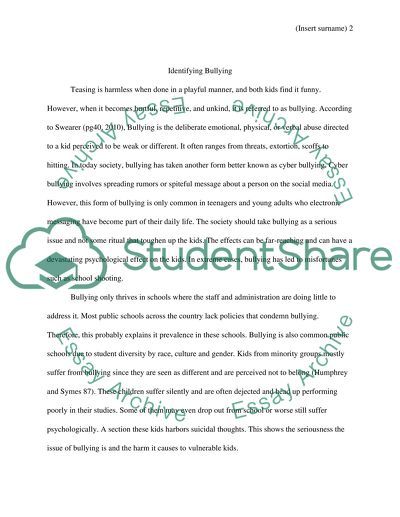Cite this document
(“Bullying Among Kids Research Paper Example | Topics and Well Written Essays - 2000 words”, n.d.)
Bullying Among Kids Research Paper Example | Topics and Well Written Essays - 2000 words. Retrieved from https://studentshare.org/psychology/1701613-what-makes-kids-bully
Bullying Among Kids Research Paper Example | Topics and Well Written Essays - 2000 words. Retrieved from https://studentshare.org/psychology/1701613-what-makes-kids-bully
(Bullying Among Kids Research Paper Example | Topics and Well Written Essays - 2000 Words)
Bullying Among Kids Research Paper Example | Topics and Well Written Essays - 2000 Words. https://studentshare.org/psychology/1701613-what-makes-kids-bully.
Bullying Among Kids Research Paper Example | Topics and Well Written Essays - 2000 Words. https://studentshare.org/psychology/1701613-what-makes-kids-bully.
“Bullying Among Kids Research Paper Example | Topics and Well Written Essays - 2000 Words”, n.d. https://studentshare.org/psychology/1701613-what-makes-kids-bully.


